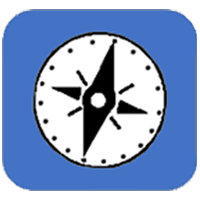Events

Know your smoke
Webinar recording. In this webinar, RMRS research physical scientist Shawn Urbanski and fire ecologist Duncan Lutes will discuss the current state of the science on wildland fire smoke emissions, including pollutants present in smoke, methods for quantifying emission flux, existing datasets, tools, and models, and deficiencies in current scientific understanding.

Wildfire-driven forest conversion in western North American landscapes
Webinar recording. Description: Changing disturbance regimes and climate can overcome forest ecosystem resilience. Following high-severity fire, forest recovery may be compromised by lack of tree seed sources, warmer and drier postfire climate, or short-interval reburning. A potential outcome of the loss of resilience is the conversion of the prefire forest to a different forest type or…

Vegetation management – Grazing and mechanical treatments in sage steppe
Webinar recording. Vegetation management in the shrub steppe is critical to protecting communities and meeting landscape management goals. Chris Schactschneider, OSU Extension, and Seth Hulett, Washington Department of Fish and Wildlife, will share examples of how grazing and mechanical treatments can be used to change fire behavior.

Potential Operational Delineations (PODs), what are they, how do they work?
Webinar recording. A presentation on Potential Operational Delineations (PODs) from multiple perspectives including both scientists and managers. We will discuss how PODs were used in Northern New Mexico past fire seasons where PODS were utilized; with an emphasis on PODs as a fire planning tool, new developments in research and applications, and innovations within the…

Living with PTSD: A wildland firefighter perspective
Webinar recording. Presenter: Marc Titus, Staff Specialist, Nevada Division of Forestry’s Fire Adapted Communities and MS Student in Psychology, Arizona State University. Description: PTSD is quietly impacting wildland firefighters with its often devastating personal and professional repercussions. While no official numbers exist, suicide has become another statistic now necessary to track within the wildland community…

Role of risk management prioritization decision support tools
Webinar recording. Presenter: Melanie Colavito, Ecological Restoration Institute Description: The Ecological Restoration Institute recently completed a project analyzing the use and adoption of wildfire risk assessment and fuels treatment prioritization methods and products—broadly referred to here as decision support tools (DSTs)—by federal land managers. There is a need to demystify the topic of spatial fire…

Predicting severe fire potential across the US with the FIRESEV project
Webinar recording. Description: Burn severity is the ecological change resulting from wildland fires. Areas burned with high severity are of concern to land managers and others because postfire vegetation, soil, and other important ecosystem components can be highly altered. Using satellite-derived maps of burn severity for almost 12,000 fires, researchers at the US Forest Service,…

Rx burn associations: Different models for different places
Webinar recording. There is broad understanding and agreement lately that there is a need to substantially increase the use of prescribed fire to create landscape resiliency, protect communities and ensure a safe and effective wildfire response. In response, more and more Prescribed Burn Associations are forming. Please join us as we visit with nine practitioners…

Invasive Annual Grass Workshop
Workshop information. Invasive annual grasses threaten millions of acres of sagebrush rangelands across the west. This two day workshop hosted by the Harney County Wildfire Collaborative and Oregon SageCon Partnership will explore the barriers and opportunities for addressing invasive annual grasses in Oregon and beyond the state. In this workshop some of the most pressing…

Engaging communities in fire adaptation in the sagebrush steppe
Webinar recording. A diverse group of panelists have been brought together to highlight a variety of engagement strategies in diverse communities. Caty Johnson from Nuestra Casa, Jerry McAdams from the Boise Fire Department, Jon Riley from Chelan County Fire District 1, and Kirsten Cook from Okanogan Conservation District will share their approaches, successes, and strategies…

